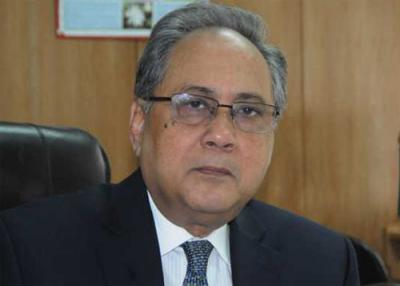Dhaka – Water Resources Minister Barrister Anisul Islam Mahmud on Wednesday stressed the need for stabilising the country’s major rivers to reduce riverbank erosion aiming to protect people’s land and belongings from its wraths.
“Riverbank erosion creates a lot of problems…now the question is how to stabilise mighty rivers,” he told a seminar at Sonargaon Hotel in the capital. UNB news agency reported
Bangladesh Water Development Board (BWDB) organised the national workshop on draft River Stabilisation and Preliminary River Management Master Plan for the Jamuna-Padma-Meghna rivers, being prepared under the Flood and Riverbank Erosion Risk Management Investment Programme (FRERMIP).
Speaking as the chief guest, Anisul Islam Mahmud said Bangladesh is a creation of three river systems — the Ganges, Brahmaputra and Meghna (GBM), which was formed though thousands of years of siltation process.
This river system (GBM) carries around 1.2 billion tonnes of silt a year, which run through the country accelerating the riverbank erosion, he said, adding that 93 percent of GBM catchment is outside the country while only seven percent of catchment is located inside it.
The Water Resources Minister said: “This is not a single river. This is a multidimensional thing…so we have to be more careful.”
Recalling the adverse impacts of erosion, he said about 50,000 people become landless in the country every year and the people who get affected by erosion cannot be rehabilitated.
“Once people become migrants losing their belongings due to riverbank erosion, they’re forced out of society and it is quite impossible to return to normal life as they lose their land as well as their roots,” Mahmud said.
He said about 30 percent of the floating people in the capital are the worst victims of riverbank erosion, losing their homesteads and all belongings.
Talking to reporters on the sideline of the workshop, the minister said the government has taken a plan to stabilise mighty rivers like Jamuna and Padma through minimising their widths up to 6-7 kilometers to cut river erosion.
Chaired by BWDB director general Md Jahangir Kabir, the workshop was addressed, among others, by Water Resources Senior Secretary Dr Zafar Ahmed Khan and FRERMIP project director AM Aminul Islam.
FRERMIP team leader Knut Oberhagemann made a power-point presentation on the draft River Stabilisation and Preliminary River Management Master Plan for the Jamuna-Padma-Meghna Rivers.




